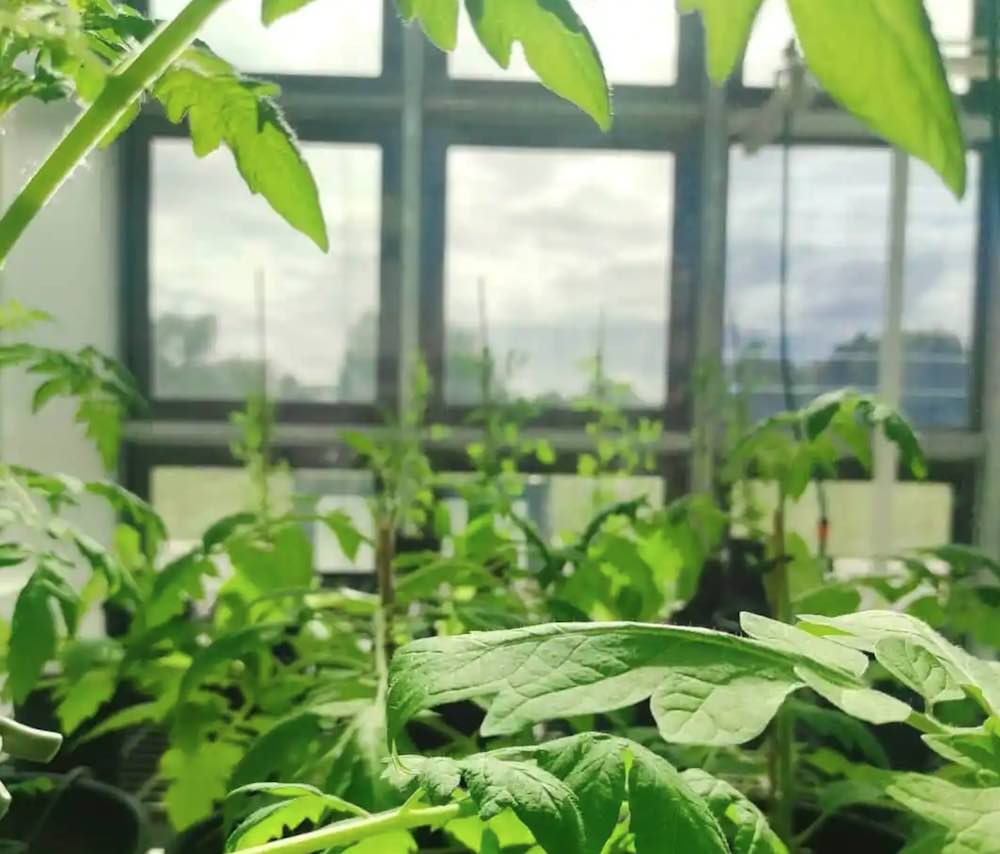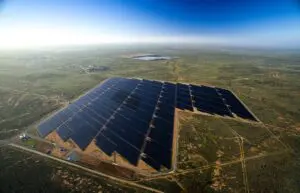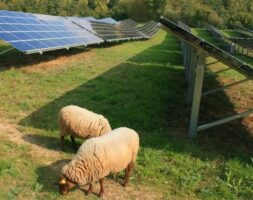A world-first clear solar glass greenhouse installed in Western Australia in 2021 using home grown BIPV technology has been found to have cut the agrivoltaic facility’s energy use almost in half, compared to a conventionally glazed alternative.
Perth-based ClearVue Technologies says the results from a “first of a kind” two-year study of the company’s Australian designed clear solar glazing technology at Murdoch University has demonstrated a roughly 40% reduction in the solar greenhouse energy use intensity.
As well as a “significant offset of facility energy consumption,” the results of the study, published in peer-reviewed paper in MDPI’s Technologies journal, also reveal remarkably consistent energy generation by the solar greenhouse.
The ASX-listed ClearVue’s solar windows use a transparent interlayer enhanced with nano and micro particles that spread the solar energy that hits surface toward the optimally positioned solar cells along the perimeter of the insulated glass units (IGUs).
The company completed the construction of the demonstration greenhouse in April of 2021, at Murdoch University’s new grains research precinct at its South Street campus, south of Perth.
The demonstration facility used three different versions of ClearVue’s transparent solar PV glazing panels to power research on two fronts: new plant breeding technologies and solar greenhouse energy generation. It also includes a conventionally glazed reference room.
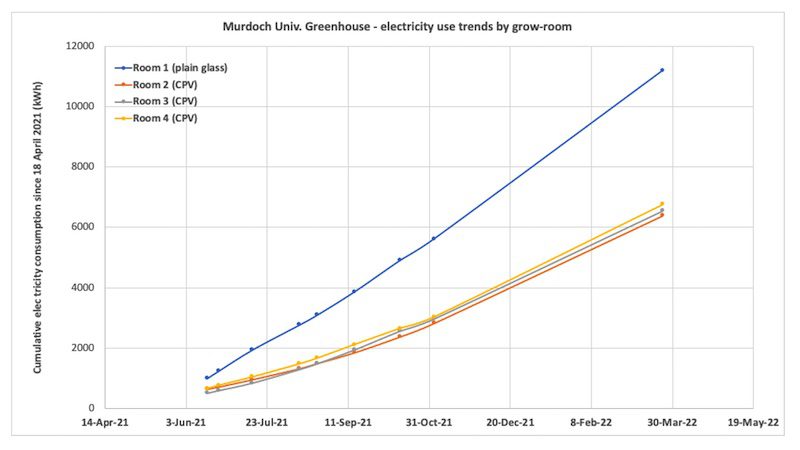
All rooms provided a controlled plant growth environment and were climate-controlled individually, using a combination of reverse-cycle air-conditioners, high-pressure water mist evaporators, motorised shading and louvre window-vent systems, ventilation fans, and an online-monitored custom-built, IoT building management system.
The study published this month focuses on the results of long-term energy generation performance of the solar powered part of the greenhouse, compared to a non-solar powered room, and contrasted with a standard 6.6kW rooftop PV installstion in metropolitan Perth.
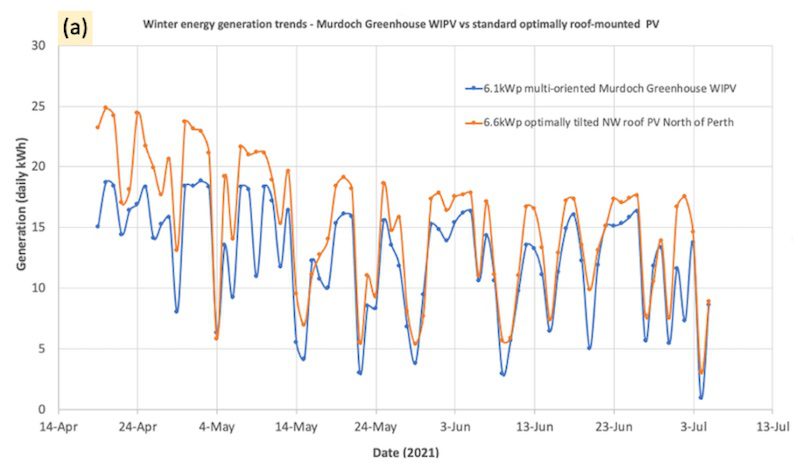
ClearVue says the solar energy harvested by the solar windows at the Greenhouse were data-logged continuously, via the system of Enphase microinverters connected to parallel-bundled solar window arrays.
According to the study, initial measurement results analysed over the autumn–winter of 2021 suggested that the solar greenhouse demonstrated a relatively stable energy production output, despite having a large area of vertically oriented windows.
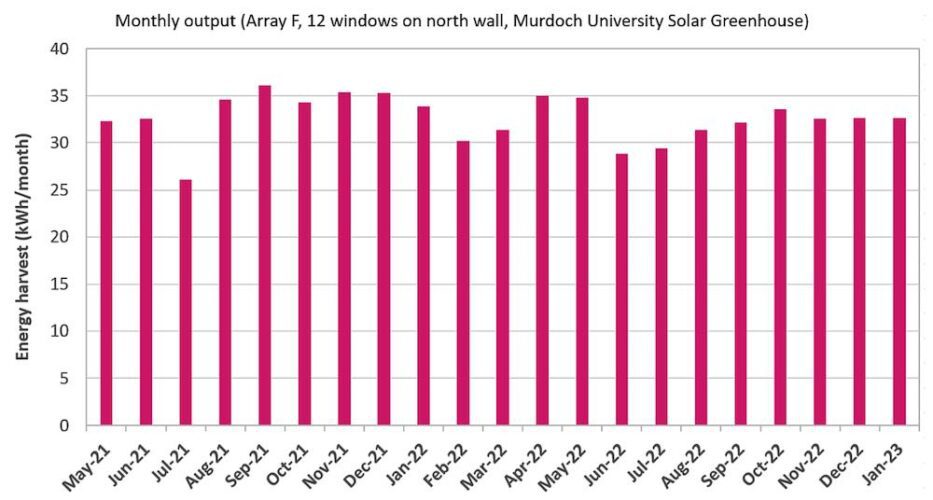
On some rainier days, the report says, the greenhouse solar windows even outperformed the standard Perth rooftop array.
The energy amounts harvested daily approached ~19 kWh/day. Some energy harvesting limitations were also observed, arising due to the maximum AC power output limitations of microinverters used, and affecting primarily the roof-mounted arrays on summer days.
“Significant energy savings were demonstrated in greenhouse grow-rooms fitted with ClearVue solar windows, which demonstrated approximately 40% of total (season-averaged) energy self-sufficiency, due to the renewable energy generated,” the report says.
Technology put to the test
“Solar glazing solutions have been talked about for years, yet until now, commercially available clear vision solar glass designed for commercial building façades has not been put to the test in a real-world environment for extended study,” says ClearVue’s chief business development officer Clifton Smyth.
“The only long-term installation of its kind has shown that solar energy harvesting with ClearVue solar glazing solutions is not only feasible on vertical surfaces, but effective throughout all seasons.
“Each installation is unique, so results will vary depending on how demanding energy use is for any given building, and where and how the solar glazing is installed on a building.”
Steady progress
ClearVue has been making steady progress with its technology both in Australia and abroad since making its debut on the stock exchange in 2018, and its first commercial demonstration in 2019 – a solar glass atrium at the entrance to a suburban Perth shopping centre.
In August 2021, ClearVue Technologies took an order to supply a greenhouse at a high-profile eco-tourism and “wellness” project in Japan.
Last year, the company commissioned modelling to demonstrate how its solar glass can boost a building’s energy efficiency and thermal efficiency standards to world-leading levels – as well as supply a good chunk of its electricity.
The modelling was based on an “archetype” six-storey office building located in in Canada, named ‘ClearZero,’ developed by energy efficiency and sustainability specialists, Footprint, using ClearVue’s solar glazing as the primary façade material.
This year, ClearVue has turned its focus to bringing manufacturing of its core technology onshore, with a grant of up to $2 million to establish a WA-based Photovoltaic (PV) and Nanoparticle Components Manufacturing Facility.
And in May, the company unveiled improvements to both its patented solar glass technology and solar façades which will reduce fabrication time and costs while also boosting energy output for its solar façade solutions.

